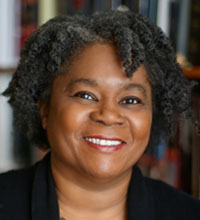
As discussed in our last two posts, several amendments to the ABA Standard on Legal Education that were adopted on Feb. 22, 2022, reinforce the need for, and value of, leadership development. The proposed amendments are in Standards 303(b) (professional identity development), 303(c) (bias and cross-cultural competency & racism education), and 508(b) (student well-being resources). These three important topics are fundamental to robust leadership development programs and courses. Satisfying the new requirements can be achieved through adopting or enhancing leadership development at your law school. In this three-part series, we discuss each.
Part 1 was a discussion of the new requirement in ABA Standard 303(b) requiring law schools to “provide substantial opportunities to students for … the development of a professional identity.” Part 2 of this series addressed the requirement in ABA Standard 303(c) to “provide education to law students on bias, cross-cultural competency, and racism.” In this Part 3, we focus on the need for law schools to provide students with “information on law student well-being resources” in accordance with ABA Standard 508(b).
Part 3: Caring for One’s Well-Being is Critical to Success as Lawyer and Leader
The amendment to ABA Standard 508(b) requires law schools to provide students with “information on law student well-being resources.” The proposal also calls for the law schools to work to remove the stigma of accessing mental health and well-being supports on campus and within the legal profession.
New Interpretation 508-1 reads:
Law student well-being resources include information or services related to mental health, including substance use disorders. Other law student well-being resources may include information for students in need of critical services such as food pantries or emergency financial assistance. Such resources encompass counseling services provided in-house by the law school, through the university of which the law school is a part, or by a lawyer assistance program. Law schools should strive to mitigate barriers or stigma to accessing such services, whether within the law school or larger professional community.
New Interpretation 508-2 reads:
Reasonable access, at a minimum, involves informing law students and providing guidance regarding relevant information and services, including assistance on where the information and services can be found or accessed.
This addition to the Standards signals the importance of law schools’ effort to care for all aspects of our students’ development. For students to use their legal knowledge, skills and competencies to achieve their goals (i.e. self-actualization), they must learn to care for themselves and tend to issues related to mental and physical health. Law school is our opportunity to help students develop the healthy strategies they will need to deal with the stress of the practice of law, maintain healthy relationships with family and friends, and manage their time wisely so that they can continue to enjoy the hobbies and passions that are important to them.
Leadership development programs recognize the importance of well-being and provide opportunities for students to identify and adopt healthy practices that will benefit them as they enter the profession. In Fundamentals of Lawyer Leadership, Chapter 11 (The Importance of Well-Being: Thriving in the Legal Profession) discusses the dimensions of health and shares resources and techniques for long-term practices and habits. In Leadership for Lawyers Chapter 2, Rhode discusses the evolution of well-being, the underlying causes of stress in the legal profession, and suggestions for positive strategies.
Modern law schools are called to go beyond teaching law students to “think” like a lawyer to preparing them for success as whole or complete lawyer (i.e., how to “be” a lawyer) – and a healthy one at that! The efforts to increase professional identity/formation and leadership development programming at law schools are national efforts to address the Carnegie Report’s description of the third stage or apprenticeship of the development. See Growing Number of Leadership Programs and Courses Supports Professional Identity Formation for a further discussion about developing well-rounded lawyers who will be find meaning, satisfaction and success in life using knowledge and skills that are learn (or at least introduced) in law school and developed throughout their careers.
Thank you for your efforts and keep up the good work!
– Leah












